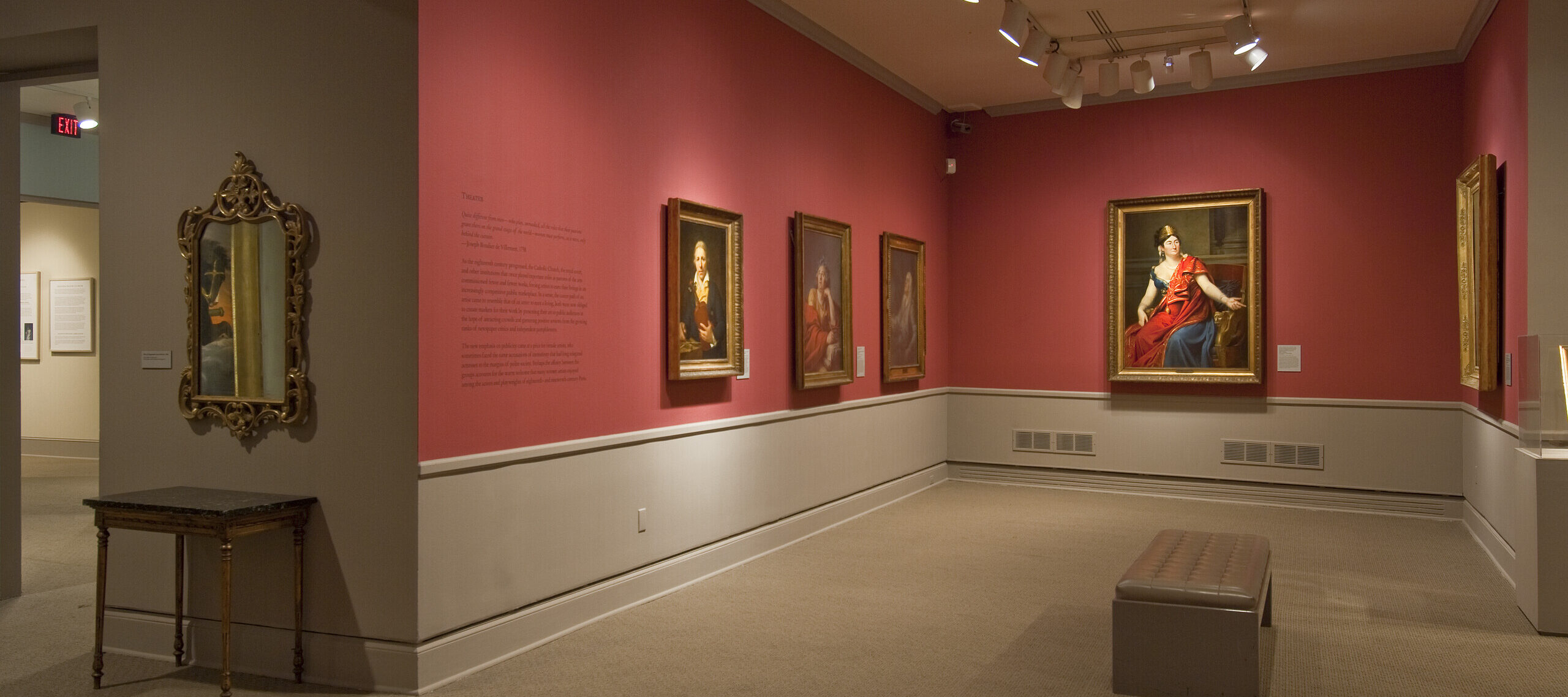In Royalists to Romantics: Women Artists from the Louvre, Versailles, and Other French National Collections, 77 works by 35 artists display the talents of French Revolution-era women artists. Their paintings are windows into their careers and the singular challenges of their time. The catalogue that NMWA has published to illustrate Royalists to Romantics includes essays as well as individual artist biographies that give insight into the lives of women artists working in France between 1750 and 1848.
Several paintings in our current exhibition, Royalists to Romantics, depict the bond of motherhood. There are portraits of families huddled together, children seeking their mothers’ arms, and mothers watching dutifully over sleeping infants. This depiction of women as caring mothers is seemingly traditional; however, it actually opposed what many male artists in the Neoclassicist movement portrayed. While female artists painted mothers as loving family matrons, male artists focused on the female nude as the ideal woman.
French art in the late 18th century was moving out of the playful Rococo style and back toward classical Greek and Roman ideals of beauty, symmetry, and poise. As a result, paintings’ themes began to shift and the female nude, reclined and draped in a Greek-style robe, was once again resurfacing as a popular subject. Artists like Marguerite Gerard, Marie Genevieve Bouliar, and Louise Marie Jeanne Hersent challenged this recurring theme by painting not women on their beds, but women watching over their infants’ cradles. By focusing on these subjects, the artists asserted that women had more worth than their physiques, which male artists often presented for voyeurs.
One such painting is The Good Mother, by Louise Hersent, more famously known as Louise Mauduit. While many of her best-known works were inspired by historical events from the 16th to 18th centuries, the theme of The Good Mother, completed in 1815, is simple. It features a mother gazing lovingly at her sleeping child who sprawls out in a cradle. From the title alone, we know that Hersent has painted what society deems to be the picture of a “good” mother. The woman holds her hands clasped and inclines her head serenely, displaying complete attentiveness to the baby. She holds a pair of eyeglasses and a piece of paper in her hands, which symbolize an education that she will surely pass onto the child. Clearly, by the state of the room, this woman also has a means of providing for the child. She is also young and traditionally attractive. This may be one version of a “good mother,” but it is clearly simplistic and idealized.
Perhaps, though, Hersent was onto something. While the empire waist of the woman’s dress and the pose of the infant are in keeping with 18th-century French standards, there are elements suggesting that this painting evokes the French past, rather than the present; thus undermining the entire “goodness” that is suggested. Elements of the past include the lyre, an ancient instrument, which leans against a taboret in the background, and the mother’s spiky collar, which was popular in 17th-century France. There is a possibility that Hersent wanted to emphasize changing societal standards, and present this “good mother” as an ideal of the past. She may have been evoking simple nostalgia for the recent past. As a viewer, do you see any ambiguity in this painting?
While artists like Louise Hersent challenged the era of Neoclassicism and the ideal woman, they also reinforced the “angel in the house” stereotype. Instead of liberating women from patriarchal society and the male gaze, Hersent and others confined women to childbirth and domestic life. Still, these women artists deserve credit for using their power to create works from the perspective of women in a time when they were the silent minority.
